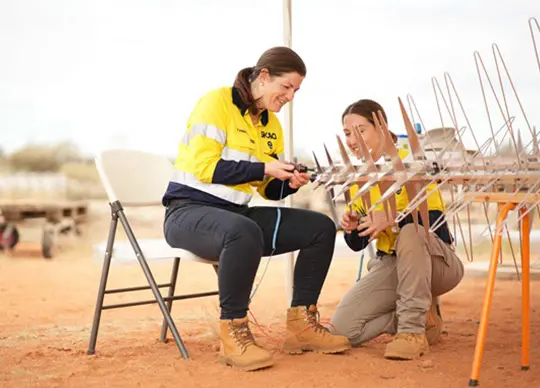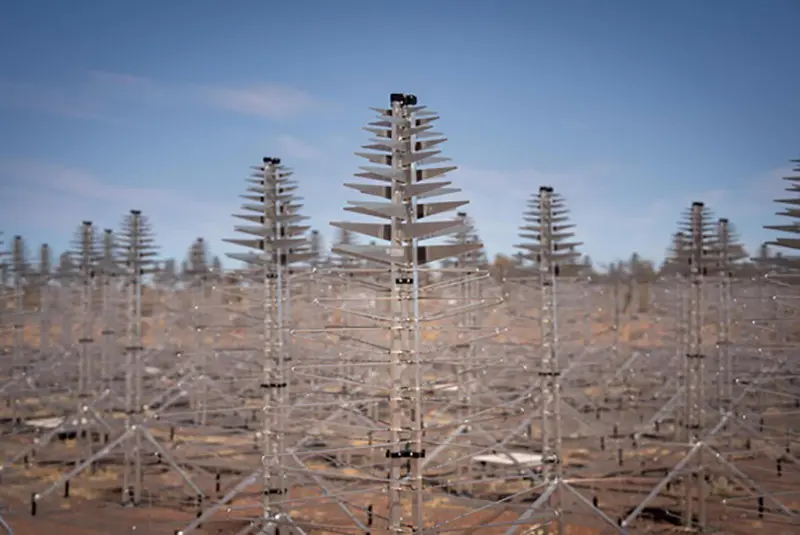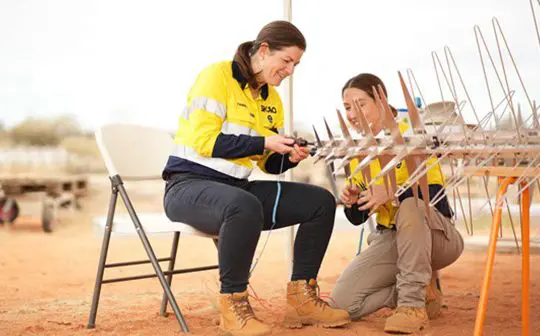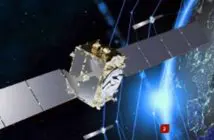
One of Earth’s biggest science facilities, destined to provide an unparalleled view of the Universe, is a step closer to reality.
The first of more than 130,000 two-metre-tall, Christmas tree-shaped antennas that will make up the SKA-Low radio telescope were installed today in WA’s Mid West, on Wajarri Country.
It is one of two telescopes, together with SKA-Mid in South Africa, being built by the global radio astronomy organisation the SKA Observatory (SKAO) as part of a world-wide effort to revolutionise our understanding of the Universe.
The SKA-Low telescope will enable scientists to explore the first billion years after the so-called dark ages of the Universe, when the first stars and galaxies formed.
SKAO Director-General Prof. Phillip Diamond, in Australia for the event, said laying the first antennas at Inyarrimanha Ilgari Bundara, the CSIRO Murchison Radio-astronomy Observatory, was a significant day for one of humanity’s biggest-ever scientific endeavours.
“Astronomers have been dreaming of this project for decades. To see the antennas that make up the SKA-Low telescope finally on the ground is a proud moment for us all,” Prof. Diamond said.
“These telescopes are next-generation instruments, allowing us to test Einstein’s theories and to observe space in more detail than ever before. With this telescope in Australia, we will watch the births and deaths of the first stars and galaxies, giving us invaluable clues about how the Universe evolved.”
Australia-based SKA-Low Telescope Director Dr Sarah Pearce said the unique and powerful SKA telescopes would help us to answer some of our most compelling scientific questions.

“The telescopes are like time machines, we’ll see things we’ve never been able to see in the history of humanity,” Dr Pearce said.
“It may not look like other telescopes you’ve seen. But the SKA-Low telescope in Australia will be able to map the sky more than 100 times faster than other state-of-the-art telescopes, and will be so sensitive that it can detect the faintest radio signals that have travelled billions of light years across space.”
Globally, 16 countries – including Australia – are part of the SKAO’s effort to build the SKA telescopes. In Australia, the SKAO is collaborating with CSIRO, Australia’s national science agency, to build and operate the SKA-Low telescope.
This week marks the start of on-site work for new field technicians who will be tasked with the massive technical challenge of building more than 130,000 antennas across 74 km of the observatory site in the Murchison region. The group of 10 field technicians, seven of whom are from the Wajarri community, are the first employees hired in technical roles to build the antennas on site.
They were recruited to participate in a 12-month training program established by teams from the SKAO and CSIRO. The training program is intended to provide the skills field technicians need to build the SKA-Low telescope, as well as transferable skills that will improve their long-term job prospects. The SKAO and CSIRO teams worked closely with the Wajarri Yamaji People to encourage recruitment of Wajarri employees in these roles.
CSIRO Chief Executive Dr Doug Hilton said it was a milestone moment for an extraordinary science mega-project and CSIRO, as Australia’s national science agency, was honoured to be part of it.
“The SKA project truly evokes another scientific age of wonder, promising new discoveries that will challenge and enrich our understanding of the Universe itself.”
Dr Hilton said collaboration was at the heart of the SKA project, especially the partnership with the Wajarri Yamaji People, Traditional Owners and native title holders of the observatory site.
“Collaboration is what is bringing this project to life and that’s why it’s so exciting to welcome new team members in the joint SKAO-CSIRO traineeship program, including our new Wajarri team members.
“We’ve developed the traineeship program in partnership with the Wajarri community to benefit and learn from their incredible knowledge and wisdom and to grow employment opportunities on Country, reflecting our vision to create a better future for all Australians.”
Wajarri Yamaji Aboriginal Corporation CEO Jamie Strickland said the significant milestone in the SKA project was one that was celebrated by Wajarri Yamaji People.
“Through this important work, opportunities will continue to be created that allow our people to actively manage our heritage and culture and be active participants in the increased employment and economic development opportunities that will flow from the project,” he said.
“It also firmly places Wajarri Yamaji People on the world stage, and clearly shows how traditional knowledge and culture can help inform today’s technology and our understanding of our place in the Universe.
“We look forward to building on our strong partnerships with SKAO and CSIRO, and the Australian and Western Australian governments, particularly where this will benefit Wajarri Yamaji People for years to come”.
Prof. Diamond said he was thrilled to see the progress on the project, due to be completed by the end of the decade.
“In Australia, the Wajarri Yamaji People have been observing the skies and stars from this location for tens of thousands of years, so to now be sharing those same skies and stars with them is a pleasure and privilege,” he said.
The SKAO and CSIRO acknowledge the Wajarri Yamaji People as Traditional Owners and native title holders of Inyarrimanha Ilgari Bundara, the CSIRO Murchison Radio-astronomy Observatory site.
The observatory site has been established with the support of the Australian and Western Australian governments.





